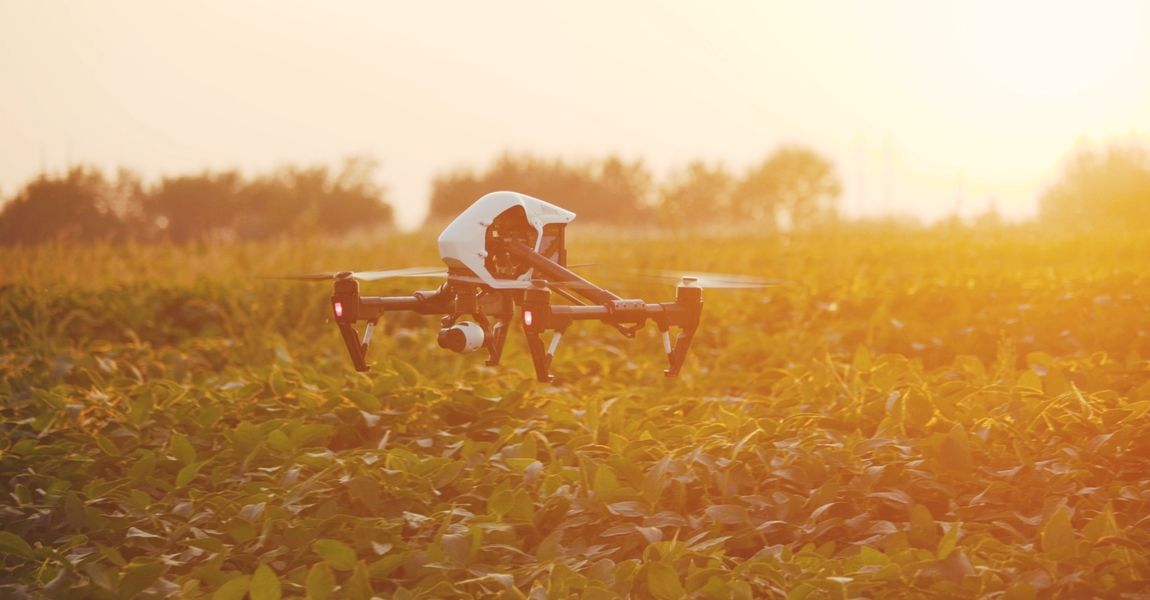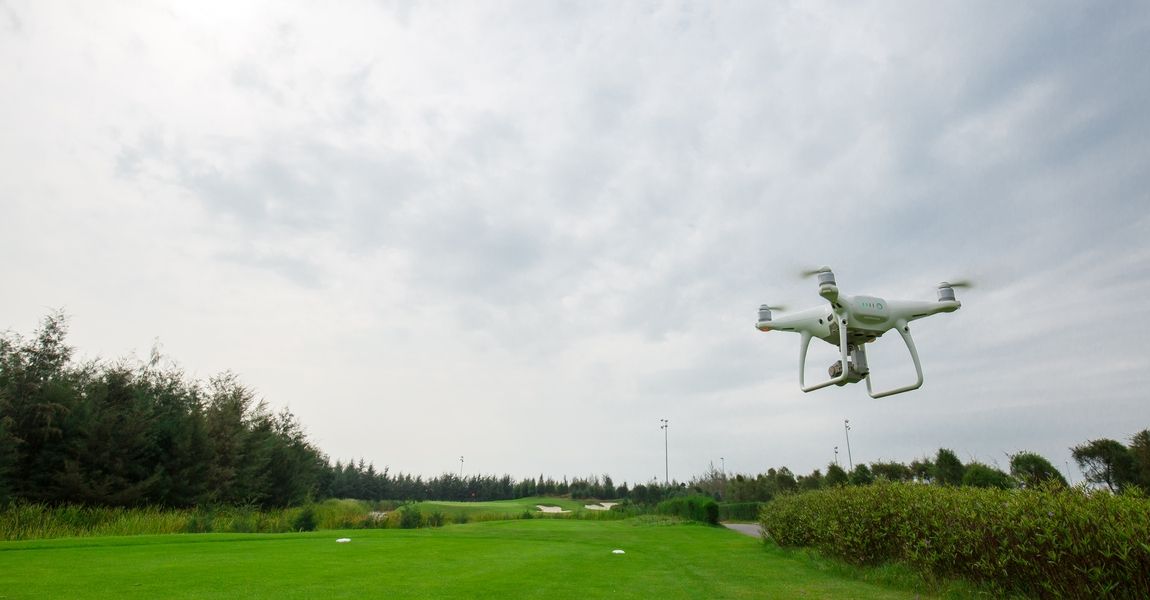Sea mines are one of the cheapest and most dangerous threats for naval forces; a reality experienced in both World Wars and the Korean War. In order to mitigate the impacts and risks of sea mines on naval operations, advanced navies have been increasing their investments in autonomous Mine Countermeasure (MCM) capabilities for two decades.
Mine countermeasures is a difficult, time consuming and risky job. Pressure builds quickly too. A single suspect rogue mine can force your fleet to wait while you clear it. That pressure is nothing like the nightmare scenario of not detecting that mine. Fortunately, the arsenal to conduct this fight is growing.
Militaries are becoming increasingly reliant on the unmanned ground, sea, and aerial vehicles to carry out dull, dirty, and dangerous missions. The introduction of new off-board tools for mine counter measures like unmanned underwater vehicles (UUV) and unmanned surface vessels (USV) are transforming the traditional means of conducting mine warfare. Navies are putting many of these systems through their paces in aid of their expeditionary forces.
Captain Nurettin Sevi, Turkish Navy, Aerospace and Defense analyst at GlobalData comments: “Modern mines have become more sophisticated with their stealth, multisensory fused and anti-sweep/anti-hunt features. Navies worldwide are seeking the best solution enabling them to detect, sweep and hunt sea mines cost-effectively, safely and swiftly. Thus, MCM is undergoing a major transition from traditional mine-hunting to an unmanned and autonomous future. UVs offer an optimum solution to this threat. They provide strategic and operational advantages to navies and security forces by reducing the maintenance and operating costs and human risk significantly in MCM operations, as well as by extending the reach of information, surveillance and reconnaissance collection.
Unmanned Surface Vehicles (USV )
Unmanned Surface Vehicles (USV ) is a vehicle that operates at or near the sea surface and has no vehicle operators on board. The USV are increasingly employed as they collect data for longer periods of time, at a fraction of the cost of Research ships, and with wide ranging scientific and industrial applications – from monitoring marine life to military surveillance, piracy control, fisheries protection and the offshore gas, oil and renewables industries.
For Navies operating at or near the sea surface gives USVs the ability to perform continuous surveillance and communicating the dats with suitably-equipped surface, air and underwater assets. USV mission package are Mine Countermeasures (MCM) , Anti-Submarine Warfare (ASW) , Maritime Security , Surface Warfare (SUW) , Special Operations Forces (SOF) Support , Electronic Warfare (EW) and Maritime Interdiction Operations (MIO) Support.
RAND concluded that USVs were ” particularly suitable for missions such as characterizing the physical environment, observation and collection regarding adversaries, mine warfare, military deception/information operations/electronic warfare, defense against small boats, testing and training, search and rescue, and the support of other unmanned vehicles. However, USVs need advanced autonomy and assured communications to complete complex missions, as well as any missions in complex environments. Autonomous seakeeping and maritime traffic avoidance are USV-specific capabilities that likely need to be developed with U.S. Navy involvement.”
MCM technologies
The detection of objects on the seafloor is a complex task. The domain of the detection and classification of naval mines is additionally complicated by the high risk nature of the task. Autonomous underwater vehicles (AUVs) have been used in naval mine countermeasures (MCM) operations to search large areas using sensors such as sidescan or synthetic aperture sonars. These sensors generally have a high coverage rate, while sacrificing spatial resolution. Conversely, sensors with higher resolution but lower coverage (such as forward-looking sonars and electro–optical cameras) are employed for the later classification and identification stages of the MCM mission. However, to autonomously execute a target reacquisition mission, it is important to be able to collect and process data automatically and, in near real time, onboard an AUV. For this purpose, an automatic target recognition (ATR) system is required.
Artificial Intelligence (AI) and Autonomous technology
USVs have already demonstrated the capability of autonomous navigation and seakeeping operations, collision avoidance, and International Regulations for Preventing Collision at Sea (COLREGs) compliance, and that evolution continues.
Improvements and evolution of AI technology will add capabilities to these craft in many areas. It will help increase the level of autonomy in the craft such that it can be operated without need for human intervention in its basic movements and navigation. This will, in turn, reduce the operational burden on a craft operator and could lead to additional manpower reductions. While most missions will require one person to operate the vessel and another operator for the payload, decision tools enabled by AI could make a single operator feasible. Advances in AI will also be vital in providing USVs with self-diagnostic technologies for predictive maintenance.
Future control technologies could also enable one operator to control multiple craft simultaneously, allowing their teammates to focus on the payload sensor or weapons. In partnership with National Aeronautics and Space Administration (NASA) Jet Propulsion Laboratory (JPL), SIS adapted the intelligent autonomous technologies used by NASA’s Mars Exploration Rover Program to meet the requirements of the US Navy. SIS’ expansion of intelligent autonomous capabilities for United States defense clients is accelerative and reflects their rapid advancement of autonomous systems.
Swarm I, conducted in 2014, demonstrated the ability for five USVs to perform as a team, under one operator, without safety riders or remote control, “a first for the US Navy.” Swarm (2016) built on those cooperative behaviors by demonstrating a different unmanned mission with 4 USVs. During another event in 2018, SIS successfully demonstrated cooperative autonomous behaviors amongst unmanned surface vehicles during a live demonstration with larger ships. These achievements are a dramatic step forward in America’s continuing dominance of the maritime battlespace.
Spatial Integrated Systems Inc. (SIS) has announced the extension of its Unmanned Surface Vehicle (USV) Swarming program under the auspices of the Office of Naval Research (ONR). USV Swarm 2019 will set another benchmark for US Navy USV operations as it will be the first integrated heterogeneous eight USV Swarm of autonomous Very Small (class 1) and Small (class 2) USVs, which will conduct a coordinated mission. The objective is to demonstrate the utility of very small and small, inexpensive USVs that can be produced in large numbers quickly.
Advances in AI will also be vital in providing USVs with self-diagnostic technologies for predictive maintenance. Combined with increase component reliability, these technologies will enable craft to go longer between maintenance periods while more predictably knowing when that maintenance is needed. Such logistical schemes, in additional to autonomous refueling, are a key to the future ability of USVs to stay on station for longer durations
Autonomy Kits
Pentagon’s Strategic Capabilities Office (SCO), through a Science & Technology effort is developing “autonomy kit” that would transform any manned surface ship into unmanned surface vehicle (USV). Different mission kits are being developed more various mission applications, allowing unmanned ships to perform a wide range of tasks currently performed by manned vessels. The kits are exchangeable so that ships can be operated as both manned and unmanned systems, Dr. William Roper, Director of the SCO said. “This can greatly help expeditionary logistics for a ship that is standing off from the shore. Instead of having to use an amphib manned by a lot of people – you have an unmanned boat supply boat,” Roper added.
Wave power meets space technology – for smarter, zero carbon ocean monitoring
Pioneering marine technology start-up, AutoNaut Ltd, has developed the AutoNaut USV propelled entirely by the waves, with zero carbon emissions. It is one of the world’s first small commercial applications of wave propulsion technology and can operate at sea for months at a time, covering hundreds of miles in a week in areas and operations too hazardous for humans. It is so quiet it can measure the whistles and clicks of dolphins over large areas. Remotely controlled from anywhere in the world via satellite, the AutoNaut houses cutting edge, solar powered sensors that capture raw research data, which are analysed, processed and then sent back to the operator on land, anywhere in the world, via a satellite communications network.
The Autonaut team have just completed a two-year business incubation programme at the European Space Agency’s Business Incubation Centre UK, at Harwell (ESA BIC UK), which is managed by STFC. Here they used highly specialised satellite navigation and communication systems to refine their navigation system and control capabilities, and deliver near real-time data collected from the USV sensors. Backed by the ESA BIC UK business support package, which includes £41.5k grant funding and dedicated business support, Autonaut has already taken part in a number of missions including with NATO, the Royal Navy, the UK Met Office and offshore engineering industrie
David Maclean, Director at AutoNaut said: “AutoNaut is revolutionary and will help us to understand our environment better at a fraction of the cost of manned technologies. Our society and economy rely on accurate data sourced from our oceans on a consistent and non-interfering basis, and having access to the business support, technology and expertise through STFC and ESA has made a massive difference to us in our journey towards commercialising our product.”
Naval Group Launches MIRICLE Next Gen Mine Warfare Project
MIRICLE (Mine Risk Clearance for Europe) project was launched in December 2021. The MIRICLE consortium consists of 19 partners representing 10 countries: Belgium, Estonia, France, Greece, Latvia, Poland, Portugal, Romania, Spain and The Netherlands. Belgium is the lead nation and Naval Group Belgium is the coordinator of the consortium.
It received a 8,99 million € ( $9,4 million USD) funding through the European Defence Industrial Development Programme (EDIDP). During 24 months, MIRICLE will address the main components of a stand-off mine warfare solution such as a mission system, communication network, Mine Countermeasures (MCM) vessel and robots, using artificial intelligence for supporting decision making. It will enable significant improvements for tomorrow and after tomorrow MCM missions.
More specifically, the MIRICLE project has three objectives:
- To provide a comprehensive and forward-looking definition and assessment of the MCM technologies.
- To elaborate a technological development roadmap for next generation countermeasure solutions, that corresponds to Member States’ procurement plans and paves the way for future European Defence Funds (EDF) developments.
- To coordinate the development of interoperable new type of assets (vessels) and MCM Toolbox.
SMAMD technology is part of a Future Naval Capability (FNC) programme, sponsored by the Office of Naval Research (ONR)
The Single-system Multi-mission Airborne Mine Detection (SMAMD) system (“SMAMD System”) is in development as part of a Future Naval Capability (FNC) program managed by the Office of Naval Research (ONR). BAE Systems will perform the SMAMD system development and performance validation. This capability will reduce the mine countermeasure (MCM) timeline by utilizing single-pass and real-time mine classification for detection, classification, and localization of mines across all zones extending from the deep water thru the beach.
The SMAMD system will discriminate targets from background, clutter, and biologics to achieve a high Probability of Detection (Pd) with a low False Alarm Rate (FAR). The SMAMD system utilizes a dual pod payload design that can be mounted onto a helo airframe. Specific sensors and software include Passive Electro-optical (EO) Sensors, 2D Light Detection and Ranging (LiDAR) sensor, and data fusion algorithms for real-time processing of contacts.
Currently, during system development, the pods are being flown on a Bell 407 commercial helicopter prior
to collect flight test data. As part of the FNC program objectives, the
SMAMD system will be demonstrated aboard the Unmanned Air System (UAS)
Fire Scout MQ-8C which is managed by Multi-Mission Tactical Unmanned
Aerial Systems (PMA-266).
The FNC demonstration will include data fusion hardware and software
necessary to integrate outputs from the individual sensors into a
coherent and accurate target list. The SMAMD system will be demonstrated
for technical performance on a Bell 407 surrogate using the two (2)
NAVAIR designed pods and populated with avionics from BAE Systems. The
system performance will be reported as a function of target
characteristics, local environmental
conditions, and sensor parameters to generate a table of performance
estimates, including probability of detection and classification (Pdc)
and False Alarm Rate (FAR). The results will be compared to pre-test
predictions and to the established exit criteria as appropriate.
The data collected will be comprised of demonstrated and modeled
system performance, operating envelopes, and characteristics to include:
• Operational ranges of altitude and speed compatibility with Fire Scout MQ-8C platforms based on mechanical/vibration profiles
• Predicted performance in expected ranges of environments (Kd, Sea State, clutter densities)
• Operating and non-operating temperature ranges
• Operating and non-operating vibration/shock ranges
• Continuous and peak power consumption
• System and subsystem dimensions and weight
Overall, the FNC program will develop the SMAMD podded system,
validate the performance of the SMAMD capability on a Bell 407
surrogate, and then demonstrate the capability aboard a MQ-8C. The
demonstration will assess:
1. Flying qualities of the MQ-8C with the mounted SMAMD pods
2. SMAMD system performance, as installed on MQ-8C
3. Mine detection data is transmitted real-time
The US Navy’s MQ-8C Fire Scout uncrewed aerial system (UAS) has participated in a new mine countermeasure (MCM) prototype technology demonstration. It was conducted at Eglin Air Force Base (AFB) in Florida in May 2022. This demonstration aimed to provide a new capability to the warfighters to rapidly detect and respond against various threats.
References and Resources also include:
Cite This Article
International Defense Security & Technology (January 28, 2023) Mine Countermeasures (MCM) technologies for Anti-Submarine Warfare (ASW) , Surface Warfare (SUW) , and counter terrorism missions. Retrieved from https://idstch.com/military/navy/mine-countermeasures-mcm-technologies-for-anti-submarine-warfare-asw-surface-warfare-suw-and-counter-terrorism-missions/.
"Mine Countermeasures (MCM) technologies for Anti-Submarine Warfare (ASW) , Surface Warfare (SUW) , and counter terrorism missions." International Defense Security & Technology - January 28, 2023, https://idstch.com/military/navy/mine-countermeasures-mcm-technologies-for-anti-submarine-warfare-asw-surface-warfare-suw-and-counter-terrorism-missions/
International Defense Security & Technology January 28, 2023 Mine Countermeasures (MCM) technologies for Anti-Submarine Warfare (ASW) , Surface Warfare (SUW) , and counter terrorism missions., viewed January 28, 2023,<https://idstch.com/military/navy/mine-countermeasures-mcm-technologies-for-anti-submarine-warfare-asw-surface-warfare-suw-and-counter-terrorism-missions/>
International Defense Security & Technology - Mine Countermeasures (MCM) technologies for Anti-Submarine Warfare (ASW) , Surface Warfare (SUW) , and counter terrorism missions. [Internet]. [Accessed January 28, 2023]. Available from: https://idstch.com/military/navy/mine-countermeasures-mcm-technologies-for-anti-submarine-warfare-asw-surface-warfare-suw-and-counter-terrorism-missions/
"Mine Countermeasures (MCM) technologies for Anti-Submarine Warfare (ASW) , Surface Warfare (SUW) , and counter terrorism missions." International Defense Security & Technology - Accessed January 28, 2023. https://idstch.com/military/navy/mine-countermeasures-mcm-technologies-for-anti-submarine-warfare-asw-surface-warfare-suw-and-counter-terrorism-missions/
"Mine Countermeasures (MCM) technologies for Anti-Submarine Warfare (ASW) , Surface Warfare (SUW) , and counter terrorism missions." International Defense Security & Technology [Online]. Available: https://idstch.com/military/navy/mine-countermeasures-mcm-technologies-for-anti-submarine-warfare-asw-surface-warfare-suw-and-counter-terrorism-missions/. [Accessed: January 28, 2023]

 Above: Modern drone radar systems, along with RF-based and other
forms of purpose-built drone detectors, are popping up at important
facilities around the globe.
Above: Modern drone radar systems, along with RF-based and other
forms of purpose-built drone detectors, are popping up at important
facilities around the globe. Above: Today’s drones give the term “low altitude” a whole new
meaning. Flying centimeters from the ground is a cinch, even for common
store-bought models.
Above: Today’s drones give the term “low altitude” a whole new
meaning. Flying centimeters from the ground is a cinch, even for common
store-bought models. Above: No matter their altitude, consumer quad-copters can stay
hidden from conventional radar emplacements by traveling very slowly.
Above: No matter their altitude, consumer quad-copters can stay
hidden from conventional radar emplacements by traveling very slowly. Above: Null steering is one of several technologies drone radars
use to overcome clutter. You can visualize how it works by using your
hand to block the sun.
Above: Null steering is one of several technologies drone radars
use to overcome clutter. You can visualize how it works by using your
hand to block the sun.
